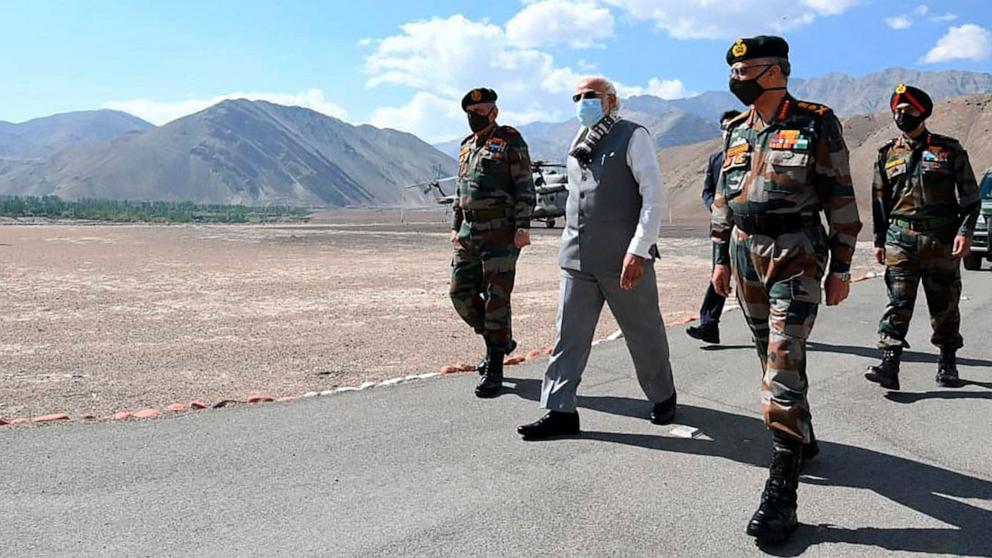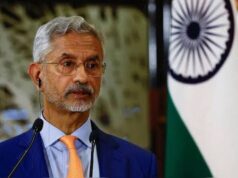Third term for Modi likely to see a stronger military for India

Fresh from declaring victory in India’s election, Shri Narendra Modi has been elected the leader by the National Democratic Alliance. He has offered subtle hints on various agenda for his third term, but went out of his way to underline he would continue to focus on raising the country’s military preparedness and clout.
That should come as good news to countries which are ready to cooperate with India without attaching strings. As it is Western countries are focusing increasingly on keeping China’s sweeping maritime claims and growingly assertive behaviour in the Indo-Pacific region in check.
“The government will focus on expanding defence production and exports,” Modi told a crowd of supporters at his party’s headquarters after election results came in. He spoke of his plan to increase security by lowering India’s dependence on arms imports. “We will not stop until the defence sector becomes self sufficient.”
Though defence cooperation with Russia, France, Israel and even U.S. has greatly expanded, overall defence imports have come down, under Modi. India has even joined the so-called Quad grouping that also includes Australia and Japan.
The U.S. is keen to have a strong partner like India to contain China,. However India will never agree to be a junior partner to any power and certainly not join any military block.
Though Americans like to see India as a frontline state as far as China is concerned, it is not so. The Indian navy is indeed becoming a major player in the Indian Ocean region and knows how to deal with China.
Many believe that the defence relationship was at the top of U.S. President Joe Biden’s agenda when he congratulated Modi on the election results.
In a call, “the two leaders emphasized their deepening the U.S.-India comprehensive and global strategic partnership and to advancing their shared vision of a free, open and prosperous Indo-Pacific region,” the White House said.
It added that National Security Advisor Jake Sullivan would soon travel to New Delhi “to engage the new government on shared U.S.-India priorities.”
It was about a year into Modi’s second term when India’s defence focus took a sharp turn toward capability building, when troops from the two nuclear neighbours clashed in 2020 in the Galwan Valley in the disputed northern border region of Ladakh and 20 Indian soldiers were killed along with 40 Chinese Soldiers.
“China really is India’s long term strategic challenge, both on the border and in the Indian Ocean as well,” said Viraj Solanki, a London-based expert with the International Institute for Strategic Studies.
Beijing has a close relationship with Pakistan, India’s traditional rival, and China has been increasing cooperation with India’s neighbors, including Nepal and Bangladesh, as well as the Maldives and Sri Lanka.
“China is really trying to engage more with these countries and develop its own influence and presence,” Solanki said. “I think that is a concern for New Delhi and something that will lead to increased competition in the Indian Ocean over the next few years.”
In congratulating Modi on the election results, Chinese Foreign Ministry spokesperson Mao Ning said that a “sound and stable ” relationship between India and China was “in the interest of both countries and conducive to the peace and development of the region.”
She also added that China stood “ready to work with India,” but her comments were significantly more muted than the Foreign Ministry’s remarks on Modi’s last win in 2019 — before the fight on the LAC. At that time, the Foreign Ministry called the two nations “important neighbors” and said China wanted to “deepen political mutual trust, carry out mutually beneficial cooperation and push forward the closer partnership between the two countries.”
Modi has always governed with his party in the majority, but this time even after increasing his vote percentage in the election, the BJP will now be to relying on its coalition partners, and will face a stronger but non cohesive opposition.
The main opposition Congress party is unlikely to challenge Modi’s defence reforms, but has been deliberately critical of how he has handled the LAC issue with China and may wrongly pressure him on that front.
Under Modi’s program of military modernization and reform, his government has sought to grow the private defence manufacturing sector, a space previously occupied solely by the government-run organizations, and has eased foreign direct investment regulations to try and encourage companies to establish themselves in India.
In a flagship project, the country launched its first home-built aircraft carrier in 2022, part of a plan to deploy two carrier battle groups to counter China’s rising maritime power.
Even now many of India’s military equipment is of Russian origin. However since 2014 Modi had provided impetus for India to diversify defence procurement and also increasingly make it in India. The indigenous content is also increasing and Indian Arms export too has doubled.
As it seeks to strengthen ties with India, Washington has agreed to a deal that will allow General Electric to collaborate with Hindustan Aeronautics to produce fighter jet engines.
Speaking at the Shangri-La defense conference in Singapore last weekend, U.S. Defence Secretary Lloyd Austin said the countries were also co-producing armored vehicles.
“The relationship that we enjoy with India right now is as good or better than our relationship has ever been,” he said. “It’s really strong.”




